

Homes designed by Wright
in Oak Park, Illinois
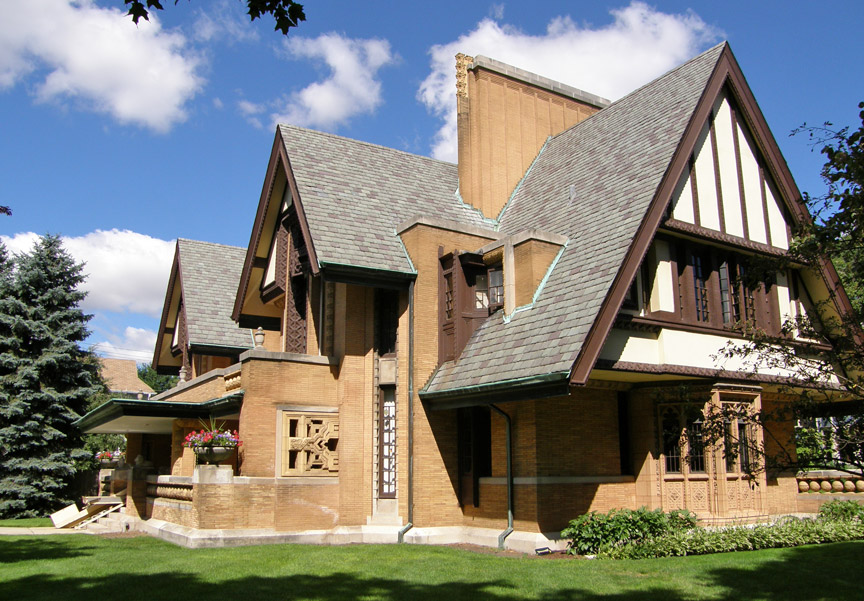
Nathan G. Moore house
The Nathan G. Moore house in Oak Park, Illinois is a Tudor inspired house designed by Frank Lloyd Wright originally completed in 1895. The house was built approximately 200 feet (60 meters) south of the property of Wright's home and studio. Both properties border Forest Avenue.

Nathan Moore told Wright, "We don't want you giving us anything like that house
you did for Winslow," referring to the Wright designed Winslow House in River
Forest, Illinois. "I don't fancy sneaking down back streets to my morning train
just to avoid being laughed at."
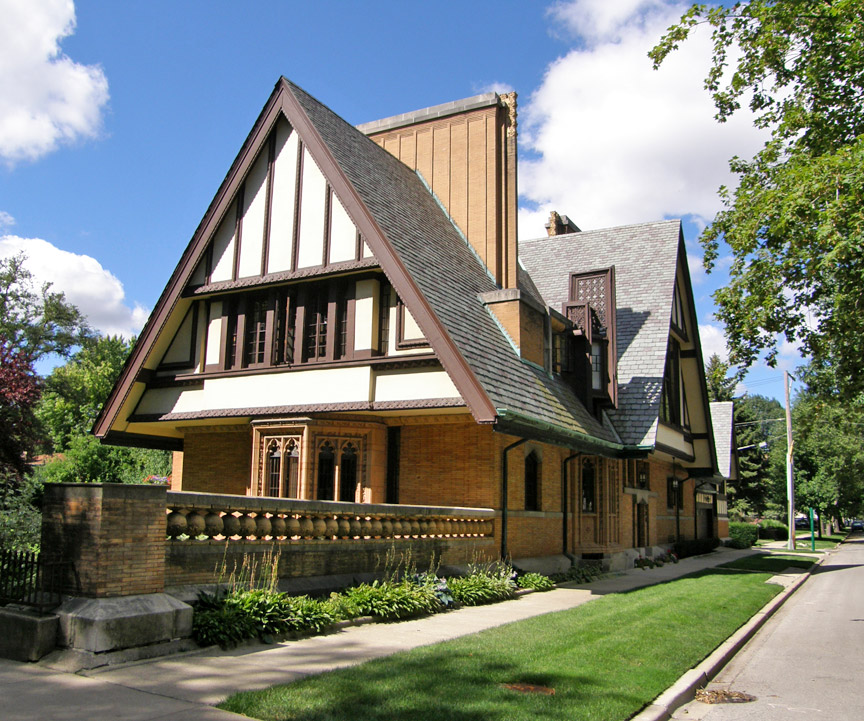
Wright disliked the Tudor style along with other revivalist styles. He believed
that styles should be forward looking and innovative as he had been trying with
his Prairie style.
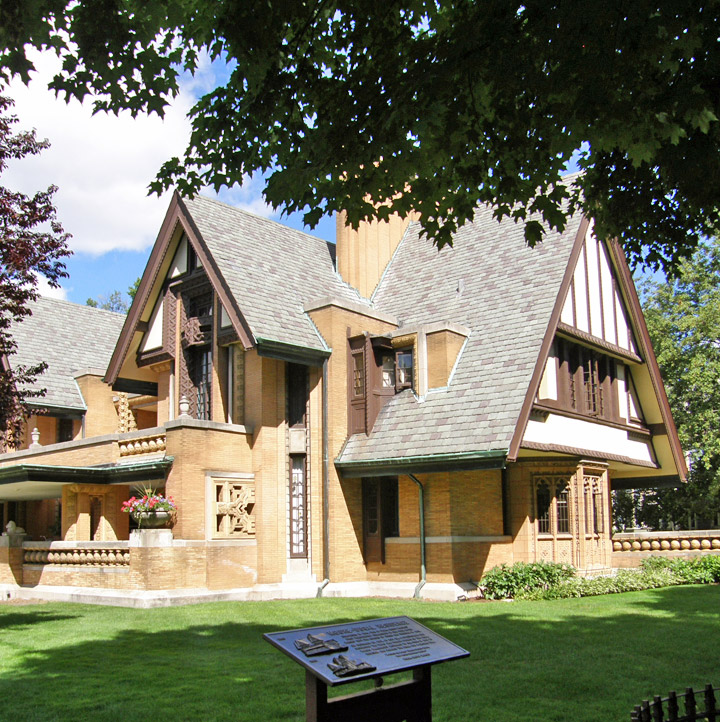
On 23 December 1922, an electrical fire destroyed the upper part of the house.
Nathan Moore was still living in the house so he asked Wright to redesign the
upper part, and the house was rebuilt. The redesign included lowering the roof
line downward by ten feet, incorporating geometric trim around the windows, and
chimney, as well as adding a cantilevered porch and concrete water table.
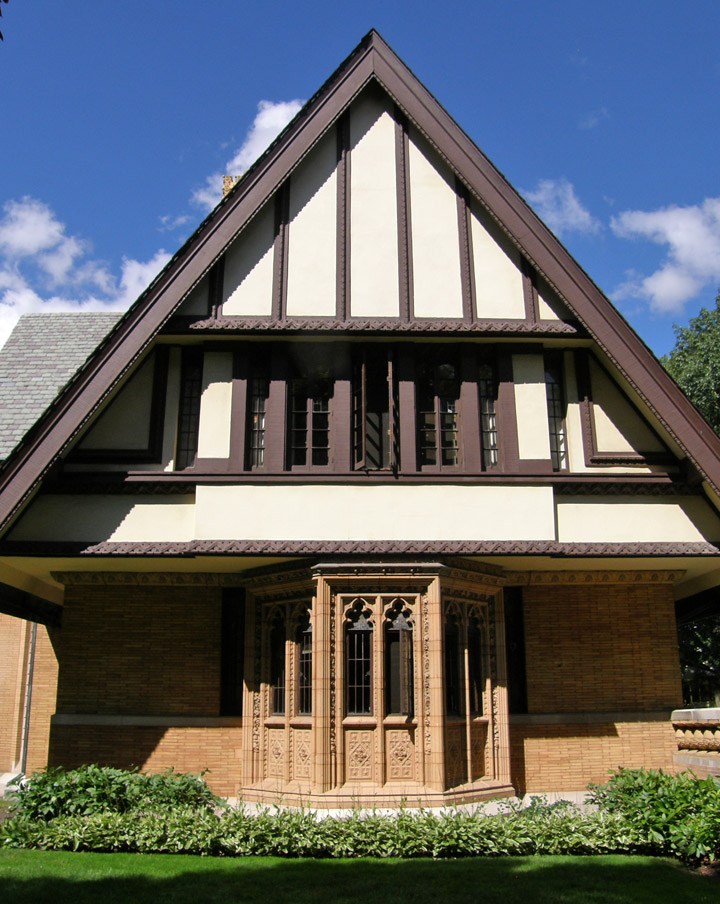
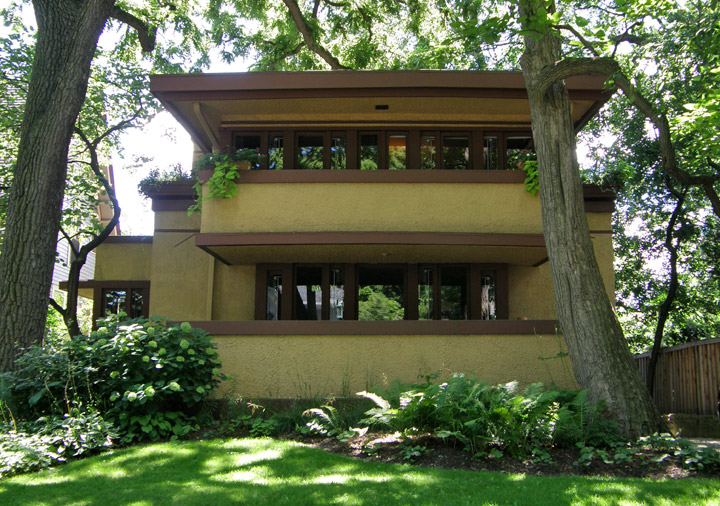
Laura R. Gale home
The Laura Gale House, also known as the Mrs. Thomas H. Gale House, is a home in the Chicago suburb of Oak Park, Illinois, United States. The house was designed by master architect Frank Lloyd Wright and built in 1909. It is located within the boundaries of the Frank Lloyd Wright-Prairie School of Architecture Historic District and has been listed on the U.S. National Register of Historic Places since March 5, 1970.
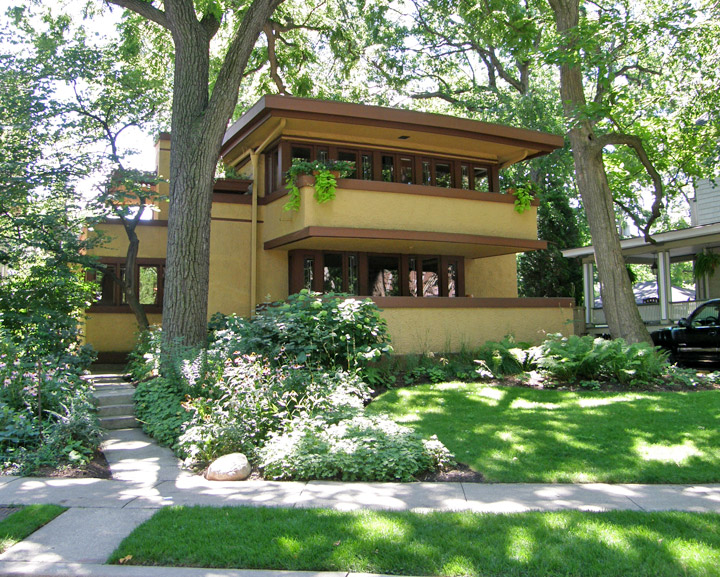
Laura R. Gale, widow of realtor Thomas Gale, commissioned Frank Lloyd Wright to
design the house on Elizabeth Court in 1909. This was not the first time that
the Gale family utilized Wright. The architect had designed two houses on
Chicago Avenue in Oak Park, two of Wright's "bootleg" houses, for the Gales. The
Gale House was designed during Wright's most productive Prairie style period and
has been cited by architectural "authorities" as a milestone in the development
of early modern architecture. The house was occupied by its original owner until
1962 when architect Howard Rosenwinkel purchased it and undertook a meticulous
restoration.
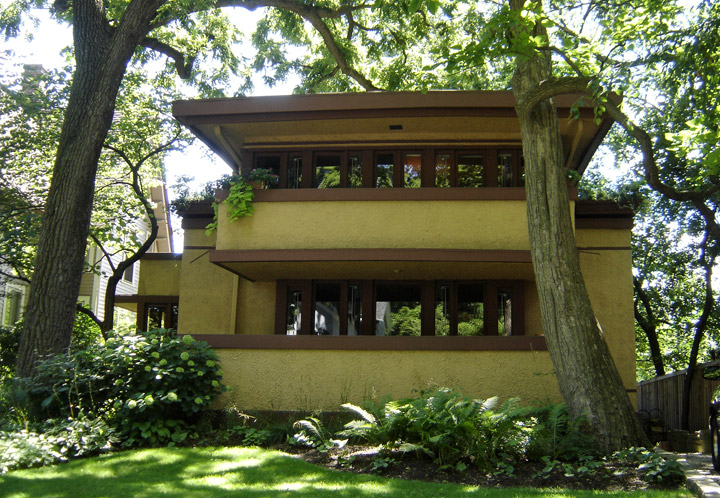
The house was designed by the American architect Frank Lloyd Wright in his own
Prairie style. Through his use of abstract geometrical shapes in the detail and
mass of the house Wright may have anticipated and inspired the modern European
architects of the 1920s. The house is considered one of Wright's most unusual
designs from his years in Oak Park, Illinois. It is compact and made up of
interlocking rectilinear forms which surround a fireplace at its center. The
extreme rectilinear shapes and masses on the home's exterior are represented in
none of Wright's other works either before or after the completion of the Gale
House. However, the home's interior was similar to that of the Walser House in
Chicago and the Barton House in Buffalo, New York.

The Mrs. Thomas H. Gale House is listed on the National Register of Historic
Places as well as being listed a contributing property to the Frank Lloyd
Wright-Prairie School of Architecture Historic District. The home is considered
one of Wright's most successful small house designs and the forerunner to
several other important Prairie style, Wright-designed homes which culminated
with the completion of Fallingwater in Mill Run, Pennsylvania in 1936.

Frank W. Thomas House
The Frank W. Thomas House is located
in the Chicago suburb of Oak Park, Illinois, United States. The building was
designed by architect Frank Lloyd Wright in 1901 and cast in the
Wright-developed Prairie School of Architecture. By Wright's own definition,
this was the first of the Prairie houses - the rooms are elevated, and there is
no basement. On September 14, 1972 the Frank Thomas House was added to the U.S.
National Register of Historic Places.



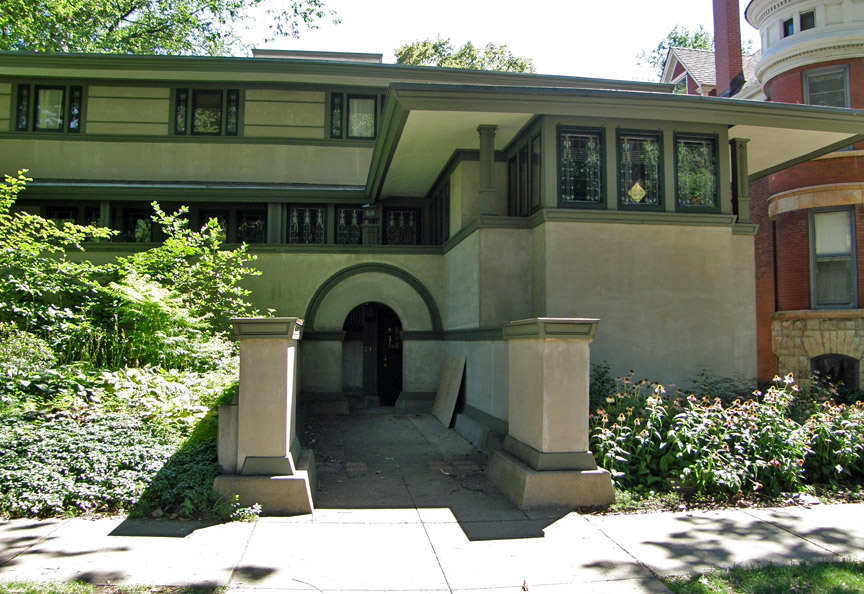

Arthur B. Heurtley House
318 Forest Avenue
The Arthur B. Heurtley House is located in the Chicago suburb of Oak Park, Illinois, United States. The house was designed by architect Frank Lloyd Wright and constructed in 1902. The Heurtley House is considered one of the earliest examples of a Frank Lloyd Wright house in full Prairie style. The house was added to the U.S. National Register of Historic Places when it was designated a National Historic Landmark on February 16, 2000.

The Arthur Heurtley House was built in 1902 and designed by architect Frank
Lloyd Wright. While the Heurtleys owned the home it underwent three major
changes. They added screens to the windows on the elevated porch as well as a
breakfast room on the main floor. The third of the Heurtley's changes converted
the "wood room," as it was known on Wright's original drawing into a pantry or
food storage area. It is thought that the breakfast room addition and wood room
conversion were done through Frank Lloyd Wright's office but the dates remain
unconfirmed.
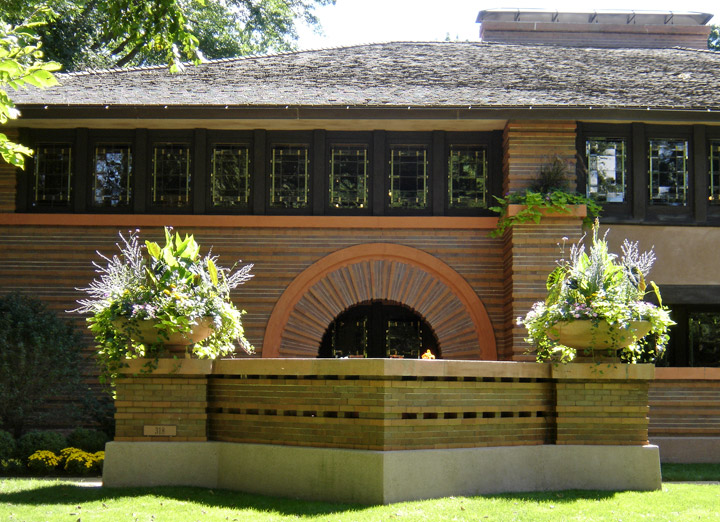
In 1920, the house was purchased by Frank Lloyd Wright's sister, Jane Porter,
and her husband Andrew. They converted the home into a duplex in the 1930s and
each floor was separated into apartments. The Porters stayed in the Heurtley
House for 26 years. After the Porters left the house, two other owners altered
the home further. The kitchens and bathrooms were modernized, the front loggia
enclosed and a black iron gate was added to the home's entryway. A master
bathroom was added in the last fifteen feet of the main floor veranda and the
living room inglenook and dining room breakfront were removed. A second chimney
and a furnace were also added. Between 1997 and 2002, the owners of the house
spent 1.2 million dollar on a complete restoration of the building.
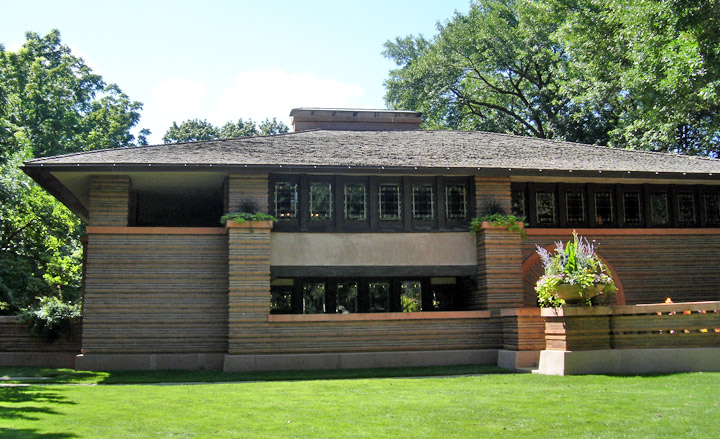
The Heurtley House is one of Wright's earliest, fully mature Prairie style
houses and the patterns that he established with the home would eventually
appear in many of his greatest works within the style. The fundamental
characteristic of Prairie style are all present in the 1902 Heurtley House. The
major spaces are raised above the surrounding grounds, ceilings echo roof forms
and the fireplaces are in the center of the house. The exterior features
overhanging eaves, a large central chimney, horizontally grouped windows and
terraces and balconies. The home's interior is unique in that its ground plan is
reversed from the traditional layout of American homes. The living and dining
areas are on the top floor of the house.
More Photos of the Heurtley house
Text from Wikipedia